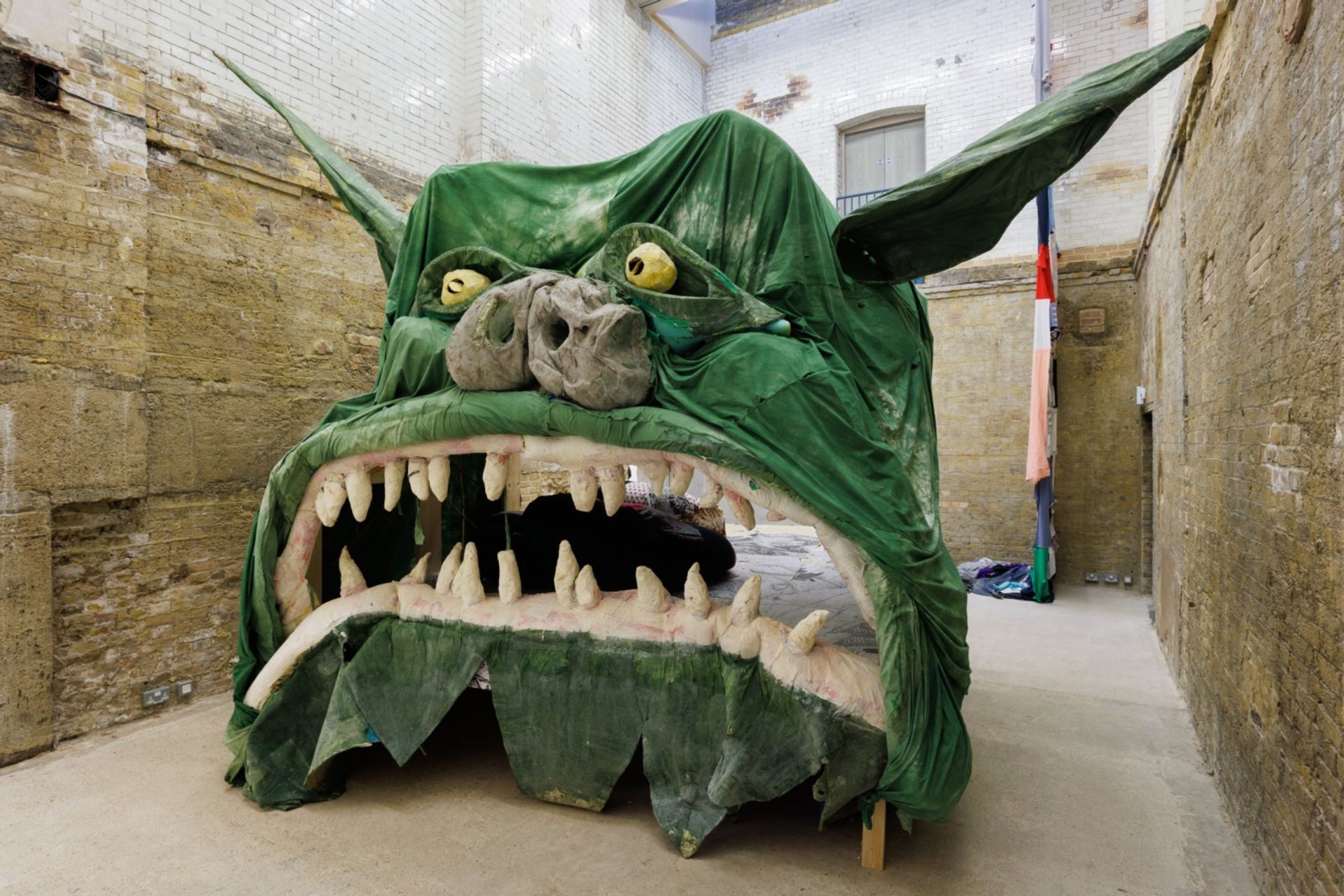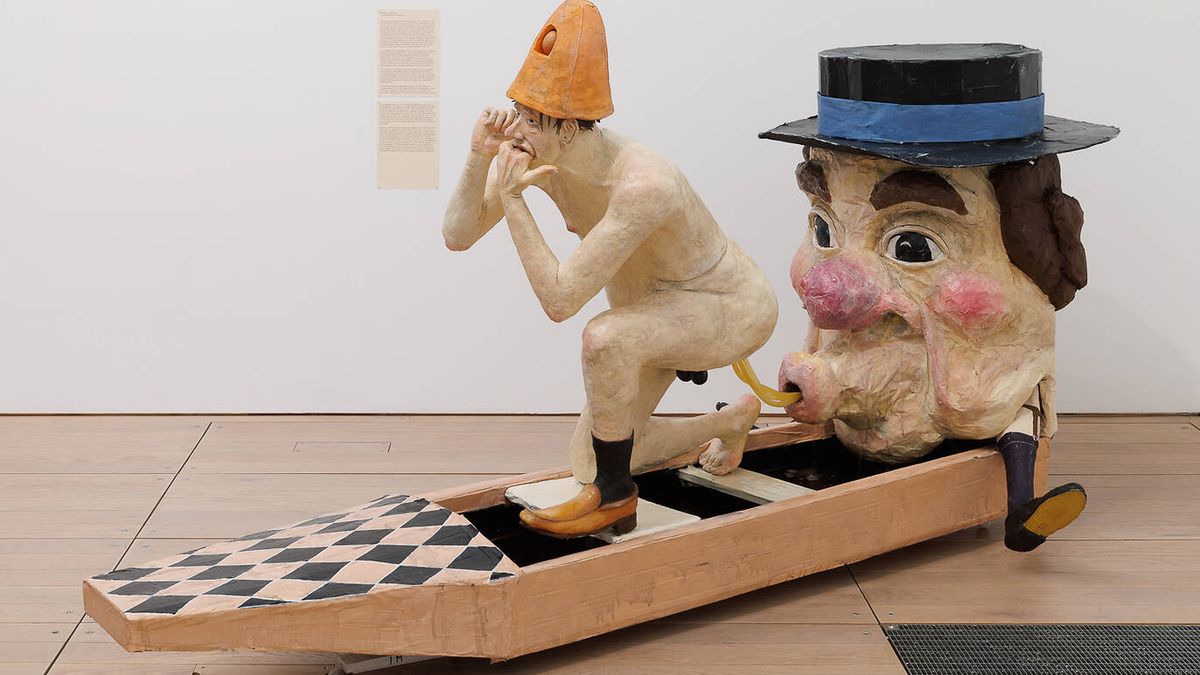In the light of recently toppled statues, cancelled cultures and agenda-freighted governmental interventions, the role and status of the monument has never been more fraught. What, if anything, should we be commemorating? Are monuments there to preserve or to suppress? Are they redemptive or coercive? Who decides? And what is permanent anyway? These questions and many more reverberate through Testament, a most timely exhibition at Goldsmith University’s Centre for Contemporary Art (CCA), which has invited 47 British-based artists to make proposals around what it means to make a monument in the UK in 2022.
“Every time we listen to the news, or are involved in conversations around public art, Brexit, Black Lives Matter, the pandemic or the climate crisis, there always seems to be a story about monuments,” says the CCA’s director Sarah McCrory. “It’s time that institutions consider or rethink the history they’re telling,” she adds, pointing to Goldsmith’s own long association with trade and the maritime heritage surrounding its South London home.
Artists from across generations and a wide range of backgrounds were invited to take part in Testament and the responses have been predictably varied. There are notes, sketches, drawings, poems, instructions, installations, sculptures, paintings, films and performances. Some are personal, some political, some fantastical and some are all of the above. Most of the work is new, although a few artists have adapted ongoing projects. Among these are Alvaro Barrington’s huge painting accompanied by Tupac Shakur’s poem “The Rose that Grew from Concrete”; and Oscar Murillo’s repurposing of the white plastic chairs that he often employs in his work, used here with hand-made sculptures of bread and corn to comment on the oppression of the working class across the globe.
One of the show’s most spectacular exhibits is Holly Hendry’s Worm Food, in which giant worm-like forms fashioned from flood defence sandbags penetrate the entire building inside and out. The common earthworm, Hendry says, “depollutes our soil while we contaminate it”, and so these figures act as symbolic ingesters of “the years of capitalism, colonisation and industrialisation [which] have brought us to a metaphorical and literal compost pile”.

Monster Chetwynd’s Monument to the Unstuffy and Anti-Bureaucratic
Other fantastical schemes include Hardeep Pandhal’s giant heap of human and animal remains, titled Da Bonez to Pick and Monster Chetwynd’s Monument to the Unstuffy and Anti-Bureaucratic, which takes the form of a massive demonic head with a gaping fanged mouth, which, she says, apparently monumentalises “radical laughter, nonsense and unbridled enthusiasm”. There’s more playfulness in a conceptual work by Bedwyr Williams that proposes a “really intense artist” wearing “daft clothes” be commissioned to create “a large monument to celebrate resilience”, but only if the artist then devotes the rest of their lifetime to caring for this creation “as if it were a giant elderly relative.”
Zadie Xa channels North Asian Shamanism with a version of a Korean Spirit Pole, populated by birds and beasts and dedicated to “the tricksters, the rebels, Earth critters and storytellers”, which is to be installed in the Thames; while in Limehouse, formerly London’s dockland Chinatown, Jay Tan proposes a colossal sculptural cake adorned with Chinese and Malaysian decorations “dedicated to the mixed unions and families of Chinese sailors and travellers who settled in London in the 1910s and thereafter”.
Less celebratory of London’s age-old role as a cultural melting pot is Yuri Pattison’s border guard desk installed as a sculptural readymade; or Jeremy Deller’s proposal that any high-rise building recently erected in central London be designated as a “readymade monument to money laundering”. Among Deller’s other proposals are a “bottomless sinkhole” to act as “a memorial to family and friends who have been radicalised and lost to us through disinformation and conspiracy theories”. Another existing structure is appropriated by Mark Wallinger in his half-hour film devoted to the giant grass mound erected by Westminster Council at Marble Arch last summer. This much-derided tourist attraction —dismantled last month—was, as Wallinger points out, London’s only major civic commission created as a result of the pandemic.
Fittingly for a show that subverts the towering monument, it is its smallest scale work that carries the heftiest impact. I am still reeling from Phyllida Barlow’s short text chronicling a conversation that took place a decade ago while she and an Iranian student watched an illicitly made video of a woman being stoned to death for adultery. The student wants to make work about the event; but how? The account ends with Barlow asking, “What is the testament for this evil? What can the memorial be to remember, to never forget?” All these years and so many more atrocities later, there is still no easy answer. But this doesn’t mean that we should ever stop asking.
• Testament, Goldsmiths CCA, until 3 April


